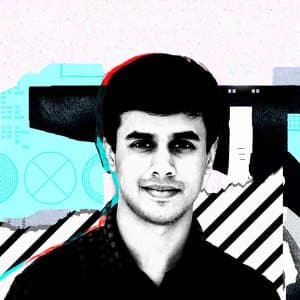Belagavi, once a city on the fringes of India’s industrial landscape in Karnataka, has transformed into a pivotal hub in the global supply chain. This remarkable shift is being driven by companies like Aequs, which have strategically established their manufacturing plants in Tier 2 cities like Belagavi. Aequs operates India’s first precision manufacturing SEZ in the aerospace sector from Belagavi.
Through visionary investments and long-term planning, these companies are shaping the future of manufacturing in India while proving that smaller cities can play a vital role in the global manufacturing ecosystem.
At Karnataka Invest 2025, Aravind Melligeri, chairman and CEO of Aequs, dispelled a myth: Manufacturing doesn’t happen in the world’s glittering capitals, as many believed. “It doesn’t happen in Western countries, in New York, Paris, or London,” Melligeri said. “It happens in Wichita, Kansas, Toulouse, France, Birmingham, Wolverhampton…”
He added that India’s strategy had to be different to compete at this level. Instead of focusing on already overcrowded cities like Bengaluru, the company made a bold decision to build in Tier 2 and Tier 3 cities.
“If I have to do it at scale, I’ll need 2,000 engineers or manufacturing CNC machinists, and they’re not available anywhere in the country,” Melligeri explained.
Aequs in its Belagavi Journey
Melligeri recalls that when the company’s journey began in Belagavi, the land was barren, and the infrastructure nearly nonexistent. There were no flights or hotels, and a ten-hour drive was the only way to reach the site. “If you asked a customer to drive 12 hours and come, they would never do it,” he said, reflecting on the struggles of the early days. Yet, he said that the vision was clear—vertical integration, self-sufficiency, and world-class infrastructure.
The company has laid out a 15-20 year roadmap. Initially, only 20% of the value-add was happening in India, but the goal was 100%. “Today, we are able to say that after 15 years, we are able to do this 100% out of India on several of the products, ” he highlighted.
To make this possible, a special economic zone (SEZ) was established, spanning 250 acres in Belagavi. The SEZ gave them control over raw material imports, customs clearances, and seamless global deliveries.
Melligeri claimed that “Today, almost every aircraft has a part going from Belagavi.” The company had become the sole source for many critical aerospace components, which means if they stopped delivering, global aircraft production would feel the impact.
The Role of Talent
However, success was not just about location—it was about talent, as Melligeri highlighted, stating that the assumption that Tier 2 and Tier 3 cities lacked skilled workers was challenged head-on. “There is talent everywhere in India. The question is whether we are able to train them to suit our requirements,” he said.
The company brought in global experts to train local engineers, machinists, and technicians to meet the stringent quality standards of aerospace manufacturing.
Moreover, Melligeri explained that vertical integration played a crucial role in this transformation. The company started with machining and then expanded through strategic joint ventures.
It partnered with Magellan Aerospace for surface treatment, Aubert & Duval (owned by Safran and Airbus) for forging, and even integrated Hindalco’s aluminium mill into its supply chain.
“By doing this vertical integration, we went from 20% to about 80%,” he said.
Now, they supply 7,500 aircraft wheels annually, covering Boeing 737s, Airbus A320s, and 100% of ATR wheels—all produced entirely in India.
Other Expansions
Aerospace was only the beginning for Aequs. The company leveraged India’s abundant unskilled labour to enter new industries, first in toys and later in consumer durables and electronics. It became India’s largest toy exporter, competing directly with China, offering prices 5-15% lower.
“In 2008, China’s wages were similar to India’s. But today, India’s wages are one-third of China’s, giving us an edge,” Melligeri claimed.
By 2022, the company had expanded into cookware manufacturing through a joint venture with Tramontina and then moved into consumer electronics, capitalising on India’s push for exports. Its 5,000-strong workforce was spread across 3 million square feet of advanced manufacturing space in Belagavi and Hubballi.
Yet, infrastructure remained a challenge for the company. Convincing stakeholders to invest in Belagavi wasn’t easy, as Melligeri explained, “It’s like sitting in the US and asking them to invest in India. People hesitate to invest in smaller towns because they don’t understand what it takes.”
But the perseverance paid off. Today, Belagavi has flights, four-star hotels, and better connectivity, all because the company took the risk of investing in the unknown.Melligeri concluded by saying, “If we can create an ecosystem, we can scale. And today, we are scaling in line with China, competing with the West, and building a future that was once unimaginable.”






























